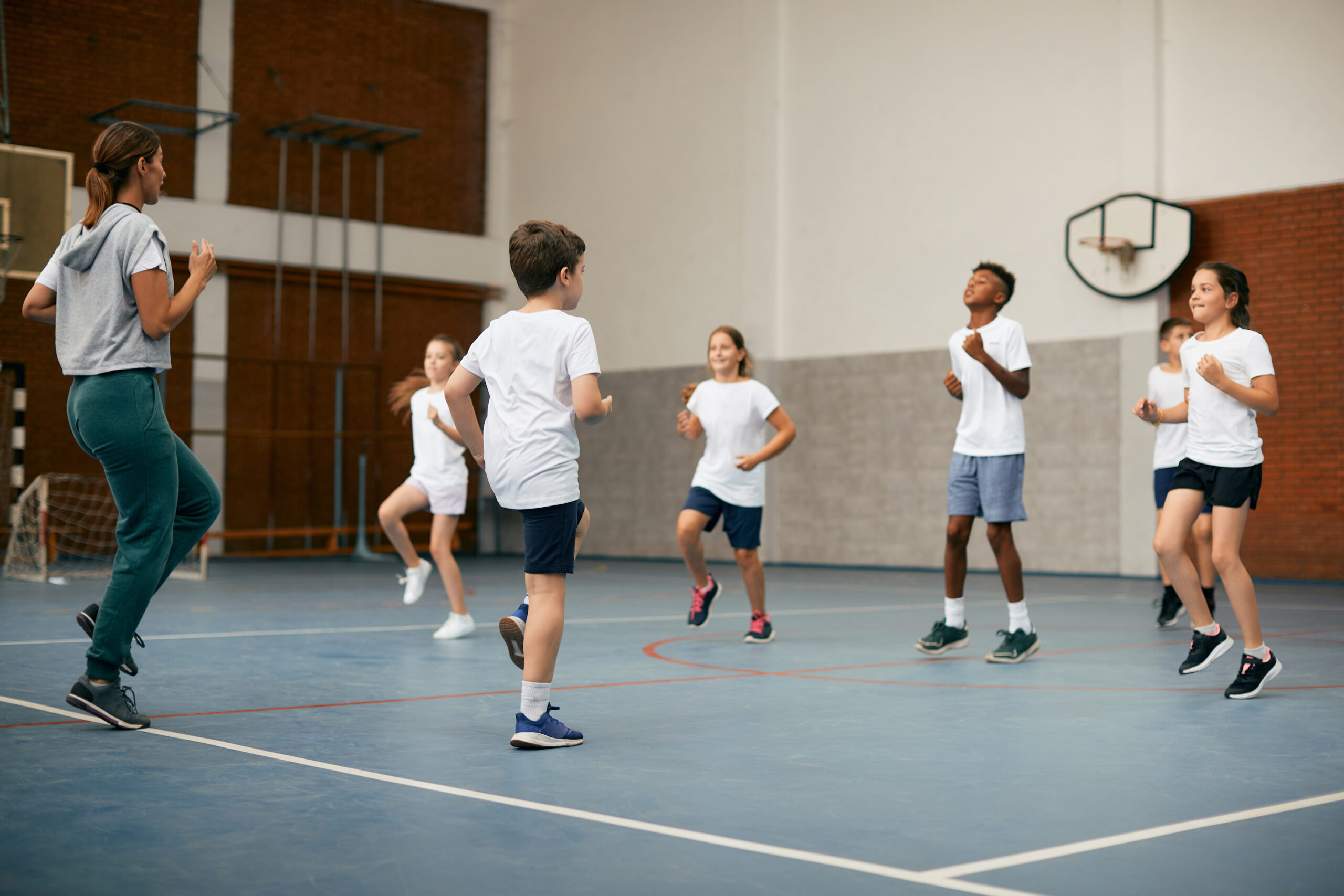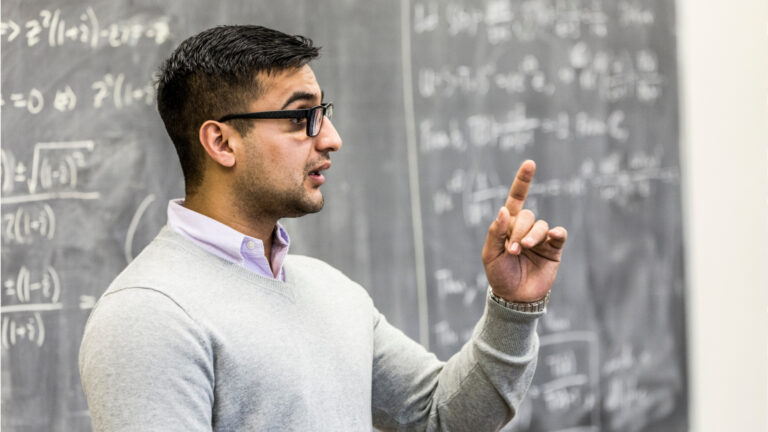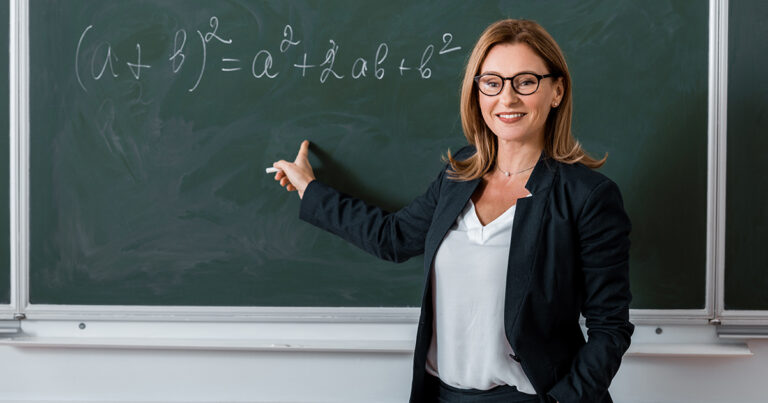PE Teacher Degree: Get To Know The Physical Education Degree
I’m sure you’ve heard of physical education (PE), but do you know what it takes to become a PE teacher? For anyone wishing to teach physical education programs in elementary schools, middle schools, or high schools, a PE teacher degree is required. With this degree, you’ll be able to create thorough lesson plans that encourage health and wellbeing while giving school students a fun educational experience.
For individuals who are interested in a profession in physical education, I will cover the advantages of becoming a P.E teacher as well as the coursework requirements, financial aid options, and job prospects in this post.
Understanding Physical Education
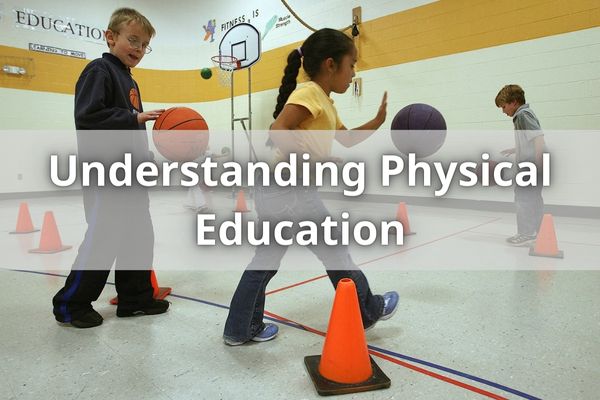
You understand the importance of physical activity and its role in overall health; now it’s time to dive deeper into how to make it happen.
A physical education degree is one way you can get the qualifications needed to teach physical education. Health and physical teacher education programs are designed for those who wish to pursue a career teaching children standards for k-12 physical education and the importance of a healthy living.
With an accredited degree, you can become certified as a PE teacher and have the training necessary to help students stay physically active while reaping the many benefits associated with exercise. The benefits of a PE teacher degree include being able to shape young people’s attitudes towards physical activity and instilling lifelong habits that will benefit them both mentally and physically.
Regardless of a student’s aptitude or interests, you will be able to leverage your knowledge as a teacher to provide excellent learning opportunities for them all in your classes. Additionally, you’ll get access to helpful materials like lesson ideas, activities, suggestions for equipment, safety guidelines, dietary guidelines, etc., providing you the skills you need to succeed as a physical education teacher.
Having a PE teacher degree from an accredited institution offers more than just professional development – it allows you to join an exclusive network of professionals dedicated to promoting lifelong health through physical activity. You’ll be part of a community devoted to making sure students not only learn but enjoy participating in activities that keep them active and healthy.
From this foundation of knowledge and experience, you will be well equipped for whatever challenge comes your way when helping young people lead healthier lives through exercise. Taking on the responsibility of becoming a certified PE teacher sets the stage for pursuing meaningful opportunities within schools across the country – all while making sure kids have fun along the way!
Moving forward with understanding the benefits of having this important qualification can further open up possibilities both inside and outside of classrooms around the world.
The Benefits Of A PE Teacher Degree
With a specialized qualification in physical education, you can gain the skills and confidence to help others lead more active, healthy lives. A physical education teacher degree is designed to equip those seeking an education-based career with the knowledge and tools needed for success. This includes understanding the various teacher requirements for different school levels of teaching positions as well as learning about exercise physiology, anatomy and kinesiology principles.
Here are some of the key benefits of obtaining a physical education teacher degree:
- Increase your knowledge base on topics like sport psychology, nutrition and injury prevention;
- Gain access to job opportunities in both public and private schools;
- Develop practical teaching strategies through hands-on experience gained in a teacher education program.
By enrolling in a physical education teacher degree program, you’ll develop instructional design techniques that are essential for any successful PE instructor. You’ll learn how to plan athletic training effectively by developing appropriate lesson plans that meet their individual needs. Additionally, you’ll be able to provide feedback on student performance while helping them build self-confidence through positive reinforcement.
With this enhanced skill set, you’re now better prepared to enter the field of physical education teaching or explore other related careers such as health promotion or fitness training. Understanding anatomy and kinesiology is essential for any career in the health sciences field so let’s delve further into these concepts next…
Anatomy And Kinesiology
Gaining an in-depth understanding of anatomy and kinesiology can open up a world of opportunities for those seeking to further their knowledge in the health sciences!
With a PE teacher degree, physical educators can obtain higher teacher salaries and certifications due to their more advanced education program. Furthermore, with a greater knowledge of anatomy and kinesiology, physical educators have a better understanding of how the body works during physical activity, which helps them create tailored exercise plans that are tailored to the individual’s needs.
Studying anatomy and kinesiology also provides essential knowledge about human movement mechanics. This kind of training allows physical educators to understand why certain movements or activities should be avoided or adapted physical education may vary depending on the student’s level of fitness or skill.
Additionally, this type of instruction also helps physical educators learn different strategies for implementing exercises safely while minimizing risk of injury.
Furthermore, learning about anatomy and kinesiology provides valuable insight into how people respond physically to different forms of exercise as well as nutrition. By knowing what types of foods are beneficial for optimal performance during workouts and sports practices, physical educators can help students reach their goals effectively without overworking themselves or risking any unnecessary injuries.
By studying this topic thoroughly before building lesson plans for students, not only will they become better equipped instructors but they will also be able to ensure that students receive proper guidance when it comes to health & fitness. With these skills in hand, PE teachers can confidently guide their students towards healthy lifestyles as they transition into adulthood.
Moving on from here we now turn our attention towards motor development…
Motor Development
Motor development is an essential part of physical education, helping students optimize their performance and stay safe while engaging in physical activities. It involves teaching physical fitness, analyzing the growth and development of a student’s physical abilities and skills, as well as creating appropriate instruction methods that meet the needs of each individual student.
A fitness coach must have certifications and specific qualifications to be able to teach motor development effectively. The physical education teacher salary for these educators also depends on their experience in the field along with their certifications and qualifications.
Physical development not only includes helping children with learning new physical skills but also providing them with a greater understanding of how those skills can be used to increase their overall level of physical fitness. A PE teacher should strive to develop a comprehensive plan for each student which will focus on building both strength and endurance through regular practice, enabling students to reach peak levels of performance throughout the school year.
In addition, it is important for school teachers to understand how different sports or activities may affect an individual’s motor development since each person may require alternative strategies depending on their age range or ability level. With this knowledge, school teachers can then create an effective program that caters specifically towards improving students’ overall physical skill levels while encouraging healthy habits such as proper nutrition, restful sleep patterns, hydration levels, etc.
Moving forward into the next section about ‘physical education content’, it is important that teachers are knowledgeable about what types of instructional methods best suit various kinds of learners so they can ensure optimal progress amongst all their students regardless of age or skill level.
Physical Education Content
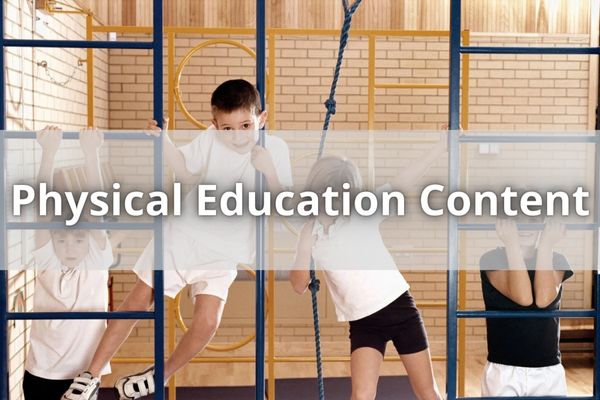
By teaching your kids physical education material that will make them healthier and more confident in their bodies, you have the chance to truly change the lives of your students.
The Bureau of Labor Statistics states that most PE teachers need to earn a bachelor’s degree in physical education to teach in public schools. A degree program may involve courses such as team sports, exercise physiology, motor development, and nutrition and health.
In addition to coursework, some programs also include hands-on experience with physical activities like swimming, basketball, soccer, or yoga. You can use this knowledge to design creative curricula for your students and provide mentorship for students who need extra guidance.
You can even create specialized activities for those with special education needs or disabilities so everyone has an equal opportunity to learn and play.
By teaching physical education content, you can help promote healthy lifestyle habits while also instilling confidence within your students. Your expertise on the subject matter will encourage them to work hard and stay active throughout their lives.
This may result in superior mental health advantages including improved moods, boosted self-esteem, and reduced stress levels. Additionally, it may even inspire some of your pupils to pursue careers involving physical activity when they grow up!
Teaching Methodology And Pedagogy
Understanding the teaching strategies and techniques that are most effective for physical education will provide you the chance to truly impact your students’ lives. Understanding the many educational theories, techniques, and tactics is crucial for being a successful physical education teacher. A strong foundation of knowledge in these areas is essential for success.
| Teacher Preparation Programs | Certification Requirements |
| Bachelors Degree | Council for Accreditation |
| Masters Degree |
Teacher preparation programs typically include courses on effective teaching methodology and pedagogy. A bachelors degree might cover topics such as physical education curriculum development and instruction; assessment techniques; communication skills; health promotion; classroom management; and incentive systems.
A master’s in physical education degree program may focus more on advanced research projects or specialized areas like dance or adapted physical activity. In addition to completing coursework, certification requirements generally involve passing tests administered by the Council for the Accreditation of Educator Preparation (CAEP).
Having a good understanding of teaching methodology and pedagogy can help you create engaging lessons that will capture your student’s attention while promoting learning outcomes. It can also help you develop meaningful relationships with your students which will foster a positive learning environment. This knowledge is key to being an effective PE teacher so should not be overlooked when considering becoming one.
Moving forward into discussing educational theory will further explore how this knowledge can benefit students in their journey through physical education classes.
Educational Theory
Gaining an understanding of educational theory can equip you with the skills to design and deliver creative and effective physical education lessons that will have a lasting impact on your students.
When pursuing a degree with an emphasis in physical education, teacher education courses are offered which provide an overview of educational theory. This may include learning about various theories such as behaviorism, constructivism, social-constructivism, or sociocultural perspectives.
Additionally, educators can pursue a Master’s degree in Physical Education which often includes coursework related to educational theory. Moreover, programs must meet standards for physical education set by accreditation bodies for educator preparation before they may be recognized as valid degrees.
Educational theory encompasses research-based approaches to teaching that focus on student learning outcomes and active engagement within the classroom environment. This includes exploring topics such as how knowledge is acquired and stored in memory or determining what strategies motivate learners most effectively.
Furthermore, it covers topics such as lesson planning methods and assessments designed to measure student progress over time.
Aspiring physical education teachers may gain a solid foundation in educational theory if they wish to become successful health and physical educators. Having a deep understanding of current research-based practices will enable them to develop more effective teaching techniques that target their students’ individual needs and improve their overall learning results.
With this knowledge at hand, teachers can better prepare themselves for success in their chosen profession by ensuring they receive the proper formal training from accredited institutions like universities or colleges prior to taking up their role as teachers in any given school setting.
Course Requirements
Acquiring a comprehensive understanding of educational theory requires fulfilling certain course requirements, providing the necessary knowledge and skills to become an effective educator.
Depending on the state or country, teachers must obtain licensure in order to become a certified PE teacher. Many teacher education programs require completing courses that focus on topics such as physical education pedagogy and teaching methods.
Additionally, continuing education is important for those already working in the field, offering new ideas and tools for teaching practices.
In addition to licensure requirements, most states also require at least some form of educational classes related to physical education theory and practice. These classes may include content areas such as exercise science, sport psychology, and biomechanics, which provide valuable information about how to create an effective learning environment through physical activity instruction.
By taking these courses and obtaining the appropriate licensure or certification program, students will have developed the proper knowledge and experience needed for success as a PE teacher.
Armed with this knowledge base of physical education theories, prospective PE teachers can then begin their search for the right program that meets their specific needs. From there, they can work with students towards becoming certified professionals in their chosen area of expertise while gaining more confidence when it comes to leading meaningful physical activity lessons in any setting.
Finding The Right Program
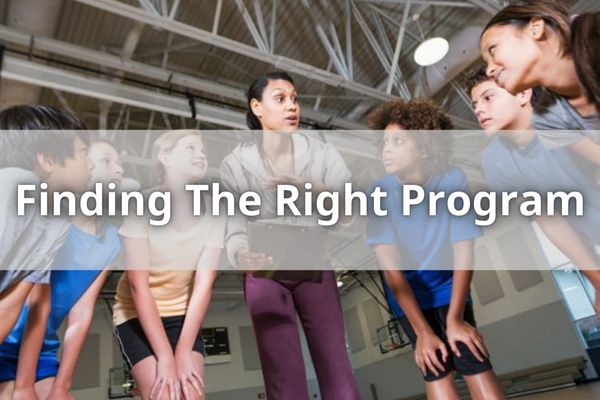
Once you know the requirements for becoming a physical education teacher, it’s time to find a program that fits your individual needs.
Different licensing requirements vary depending on the state, so it’s important to research the specific teacher education and experience education courses needed for licensure in your particular state. Bachelor’s degrees in physical education or health-related fields are typically the minimum requirement, while some employers may require a masters in physical education as well.
Before enrolling in a teacher education program, it is vital to verify the licensing requirements with the appropriate state agency as they differ per state.
Most institutions offer degree programs and coursework that might assist you in fulfilling these criteria. The most common route is completing an undergraduate degree program first and then proceeding on to graduate school if needed. It’s also possible to study online; there is an increasing number of distance learning options available which can make getting qualified more convenient than ever before.
When researching potential programs, look at factors such as faculty credentials, class size and student/teacher ratio, graduation rate of students who have completed the same degree program you’re interested in taking, job placement statistics for graduates of that program, cost of tuition and fees, availability of financial aid opportunities (which will be discussed further later), and any other criteria that are important to you when making this decision.
Financial Aid Opportunities
Having discussed the various elements to consider when selecting the right program, I’ll now turn my attention to financial aid opportunities for those looking to become physical education teachers.
As with any educational pursuit, there are a variety of teacher education programs available and it’s important to research your options thoroughly before making a commitment. Financial aid can help make pursuing a degree more manageable and, in some cases, can provide full tuition coverage.
When researching various schools, be sure to look at salary information associated with each program. You can decide how much debt it is worth taking on to get your degree by knowing what sort of wage you may earn once you graduate.
Understanding the duties and requirements of the profession can also help prospective students determine the kind of financial aid that might be available to them. For instance, you could want to check into scholarships particular to that university or field if you’re interested in enrolling in a physical education teacher program at an approved university or college.
Additionally, many states offer grants specifically designed for those looking to pursue teacher certification programs as well as loan forgiveness programs or even tax credits related to salary and job placement after graduation.
Taking advantage of these types of financial aid opportunities can be essential in helping aspiring many physical education teachers achieve their goals without taking on too much debt along the way.
With this knowledge under our belts, let’s take a closer look at potential career prospects for PE teachers.
Career Prospects For PE Teachers

It’s no secret that becoming a physical education instructor can be incredibly rewarding, both financially and emotionally! Physical Education (PE) teachers must have a teacher education degree in order to become certified.
This typically includes an undergraduate degree in physical education, as well as additional coursework and student teaching experience. A PE teacher annual salary varies greatly depending on the school district, but it is generally comparable to other teachers within the same district.
When it comes to projecting job growth projections for physical education instructors, the outlook is very positive. The Bureau of Labor Statistics estimates that job growth for this profession will continue to grow by 8% over the next decade. This is higher than the average rate of 4% projected for all occupations during this time period.
Additionally, those who pursue a career in physical education can expect to remain active throughout their day-to-day life due to their commitment to promoting an active lifestyle among students and staff alike.
A career in physical education offers an abundance of rewards, from financial stability to emotional satisfaction. Those interested should consider pursuing a teacher certification program so they can start enjoying these benefits right away!
Conclusion
I’m sure I’m not alone in feeling that a degree in physical education is an incredibly valuable investment. It’s provided me with the knowledge and skills I need to teach students about anatomy, kinesiology, motor development and physical education content.
I’ve not only learned more about these subjects, but I’ve also discovered ways to get financial assistance to pay for my degree. I now have the chance, thanks to this degree, to work as a PE instructor and influence the lives of young people.
It’s been an amazing adventure that has influenced my future.

